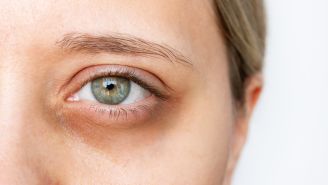Updated on April 15, 2024.
You may know that people with diabetes have trouble with blood sugar. But did you know about one-third develop an eye disease called diabetic retinopathy? And that it often leads to vision loss, and even blindness?
What is diabetic retinopathy?
Diabetic retinopathy is the leading cause of blindness among American adults. It occurs when high blood sugar levels damage small blood vessels in the retina, the light-sensitive tissue in the back of your eye. The vessels start to break down and leak fluids into the surrounding eye tissue.
There are often no symptoms or pain in the early stages of diabetic retinopathy. You can have the condition for a long time and not know it. Typically, once you notice the symptoms, significant damage has already happened. Research suggests that many people aren't even aware that diabetes can affect their eyesight.
At some point, diabetic retinopathy may display the following symptoms:
- Problems reading or seeing things close up
- Blurred or altered vision
- Floating spots ("floaters") in your field of vision
- Seeing a shadow across your vision
- Washed-out colors
- Poor night vision
- Eye discomfort, pressure or persistent redness
- Blindness
Treatments for diabetic retinopathy
The good news is that retinopathy can be successfully treated in nearly all cases if it’s caught early. But that means getting regular, comprehensive eye exams. It's vital to have them done at least once a year by an opthalmologist or optometrist.
Treatments for diabetic retinopathy vary. They depend on the type of damage to the eye and how far the condition has progressed:
- Injection therapy, in which a medication is inserted directly into your eye, may be recommended.
- Laser treatments can reduce the size of irregular blood vessels and ease swelling in the eye.
- Surgery to remove scar tissue and blood from the eyes may be the right choice for some poeople. It can also repair a torn or detached retina.
Tips to lower your retinopathy risk
You may not always be able to prevent diabetic retinopathy, but you can slow its progress. You can also lower your risk of developing it in the first place. To do this, it's important to manage your blood sugar, blood pressure, and cholesterol. Speak with a healthcare provider (HCP) about lifestyle changes that can help, including eating a healthy diet.
It's also critical to see an ophthalmologist or optometrist at least one each year for an eye exam, including pupil dilation. If you see any signs of retina damage between appointments, make sure to reach out to an eye doctor or other HCP right away. Addressing symptoms early can help lower the chances of lasting vision loss.






